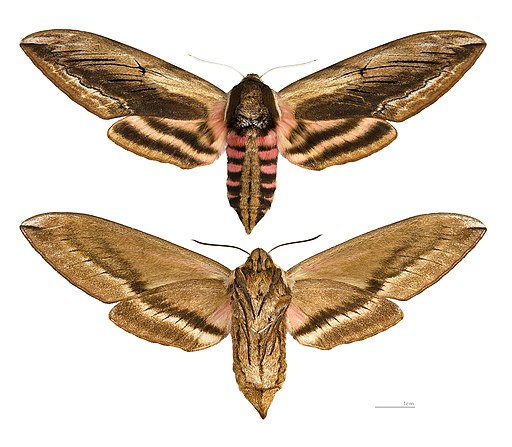Superregnum: Eukaryota
Cladus: Unikonta
Cladus: Opisthokonta
Cladus: Holozoa
Regnum: Animalia
Subregnum: Eumetazoa
Cladus: Bilateria
Cladus: Nephrozoa
Cladus: Protostomia
Cladus: Ecdysozoa
Cladus: Panarthropoda
Phylum: Arthropoda
Subphylum: Hexapoda
Classis: Insecta
Cladus: Dicondylia
Subclassis: Pterygota
Cladus: Metapterygota
Infraclassis: Neoptera
Cladus: Eumetabola
Cladus: Endopterygota
Superordo: Panorpida
Cladus: Amphiesmenoptera
Ordo: Lepidoptera
Subordo: Glossata
Cladus: Coelolepida
Cladus: Myoglossata
Cladus: Neolepidoptera
Infraordo: Heteroneura
Cladus: Eulepidoptera
Cladus: Ditrysia
Cladus: Apoditrysia
Cladus: Obtectomera
Cladus: Macroheterocera
Superfamilia: Bombycoidea
Familia: Sphingidae
Subfamilia: Sphinginae
Tribus: Sphingini
Genus: Sphinx
Species: Sphinx ligustri
Name
Sphinx ligustri (Linnaeus, 1758)
Source: Linnaeus 1758:490 BHL
Synonyms
Sphinx ligustri weryi Rungs, 1977
Sphinx ligustri eichleri Eitschberger , Danner & Surholt, 1992
References
Linnaeus, C. 1758. Systema Naturae per regna tria naturæ, secundum classes, ordines, genera, species, cum characteribus, differentiis, synonymis, locis, Tomus I. Editio decima, reformata. Holmiæ: impensis direct. Laurentii Salvii. i–ii, 1–824 pp DOI: 10.5962/bhl.title.542: 490. Reference page.
Links
Sphinx ligustri Taxon details on Fauna Europaea
Vernacular names
Deutsch: Ligusterschwärmer
English: Privet Hawkmoth
eesti: Sirelisuru
suomi: Syreenikiitäjä
français: Sphinx du troène
hornjoserbsce: Brunčak
magyar: Fagyalszender
lietuvių: Ligustrinis sfinksas
Nederlands: Ligusterpijlstaart
norsk: Ligustersvermer
polski: Zawisak tawulec
русский: Бражник сиреневый
svenska: Ligustersvärmare
Sphinx ligustri, the privet hawk moth, is a moth found in most of the Palearctic realm. The species was first described by Carl Linnaeus in his 1758 10th edition of Systema Naturae.
Description
It has a 12 centimetres (4.7 in) wingspan (generally deflexed at rest), and is found in urban areas, forests and woodlands.
The male privet hawk moth can make a hissing sound, if disturbed, by rubbing together a set of scales and spines at the end of its abdomen.
The larvae are usually found between July and August: and bury themselves in the earth when preparing to become a pupa. They then fly in the following June.[2]
Diet
As its name describes, the caterpillars feed on privets, as well as ash trees, lilacs, jasmine, and a number of other plants.
References
"CATE Creating a Taxonomic eScience - Sphingidae". Cate-sphingidae.org. Archived from the original on 2012-11-26. Retrieved 2011-11-01.
Donovan, Edward (1792). The Natural History of British Insects: Explaining Them in Their Several States, With the Periods of Their Transformations, Their Food, Economy, &c. Together With the History of Such Minute Insects As Require Investigation by the Microscope: The Whole Illustrated by Coloured Figures, Designed and Executed from Living Specimens. London. p. 79.
Retrieved from "http://en.wikipedia.org/"
All text is available under the terms of the GNU Free Documentation License


